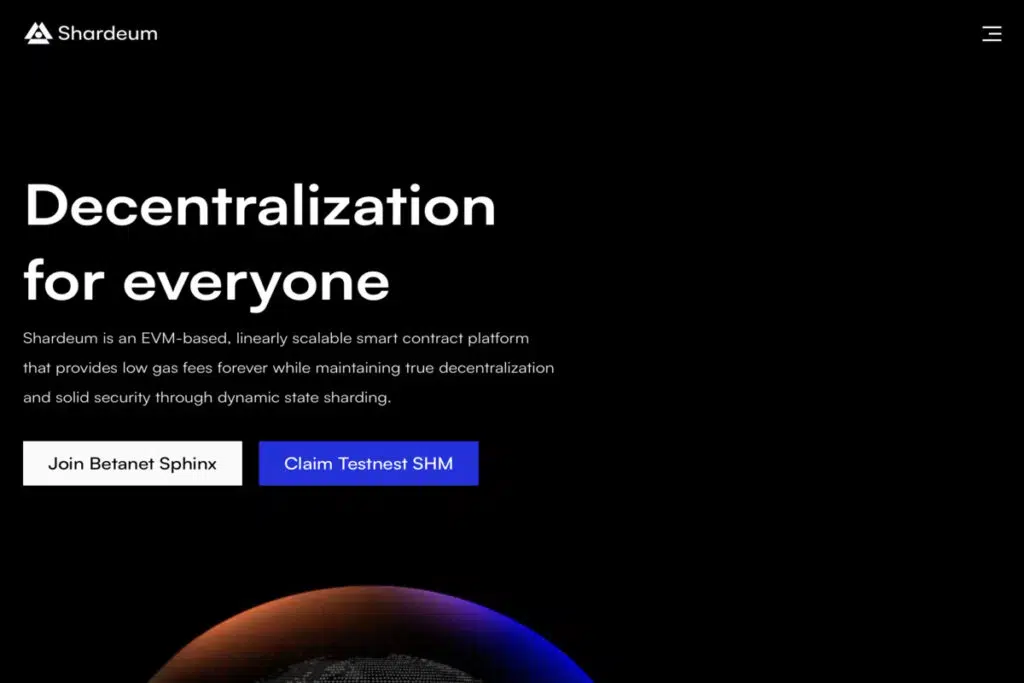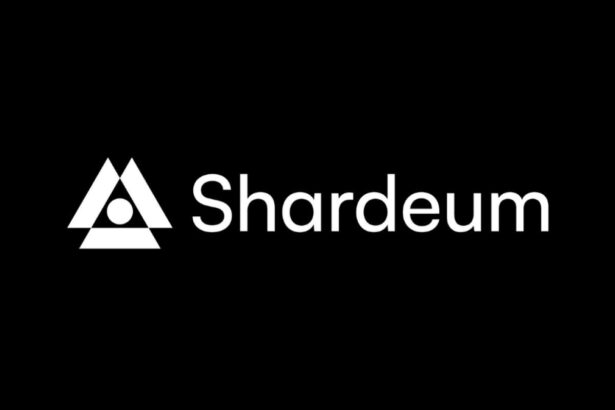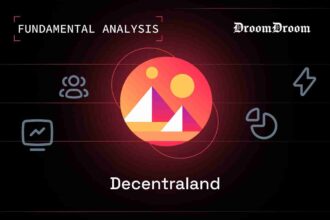In 2009, Bitcoin was created by a person or group under the pseudonym Satoshi Nakamoto, with the primary purpose being to serve as a digital currency and store of value outside the government’s control. Shortly after, in 2015, another radically innovative concept, Ethereum, was launched, primarily to build decentralized applications (dApps) through smart contracts.
- What is Shardeum?
- The Different Elements Of Shardeum
- Sharding
- Dynamic State Sharding
- Atomic Processing and Cross Shard Composability
- Linear Scaling
- Consensus: Proof of Stake And Proof of Quorum (POQ)
- Brief History of Shareduem: Roadmap and Achievements
- Shardeum’s Tokenomics
- Advantage of Sharduem
- Conclusion
Ethereum emergence raised further the question of the blockchain trilemma, which states that a blockchain can’t be secured, decentralized and scalable altogether. Sharduem, a layer 1 (L1) blockchain built on Ethereum virtual machine (EVM), challenges the trilemma concept by adding more scalability to its blockchain without hurting security and decentralization.
This has kept the crypto community bewildered; however, all indications point towards the possibility of the blockchain’s success.
What is Shardeum?

Shardeum is an EVM-based layer 1 blockchain that promises to lower gas fees forever. One of the aims is to make the “blockchain trilemma” a myth by guaranteeing a high level of security, true decentralization, and ultimately ensuring scalability.
The mission is to onboard the next billion crypto users and introduce more dApps into the web3 ecosystem. Shardeum is set to achieve this through its unique technology, called dynamic state sharing, alongside a couple of other vital features: Atomic processing and cross composability and Proof of Quorum (PoQ) consensus.
Previously, developers had to select two characteristics between the trinity when building a blockchain, and as expected, most chains sacrifice scalability and focus on security and decentralization. This is observed with Bitcoin, regarded for its high level of security and decentralization however fails with scalability, as transactions per second (TPS) are lower. Even more evident is with Ethereum, where users pay high gas fees to make their transactions priorities. Just like Bitcoin and Ethereum, other layer 1 blockchains are suffering the same fate and the impact is felt predominantly by users who pay high gas fees, lose their crypto due to a blockchain hack, or don’t get a fully decentralized feature expected on a blockchain.
The Different Elements Of Shardeum
Compromising the blockchain isn’t the perfect and frictionless way to onboard the next billion users and dApps onto the blockchain, and even so, doing it fast, according to the brains behind Shardeum. Reviewing the components that position Shardeum as the panacea to these problems is important.
Sharding
Sharding is simply the process of breaking a blockchain workload into undersized fragments to boost the transactional power of the network. It means splitting the blockchain into smaller segments known as shards; each independent and maintaining its data.
This benefits the blockchain as transaction speeds are faster and latency is lowered. Blockchains, including Zilliqa, Polkadot parachain, and Ethereum, use sharding. The limitation of this process is how consensus is achieved, meaning that transaction validation or consensus occurs at the block level, invariably stalling the pace of verifying transactions. With Shardeum, the consensus is distributed across every shard in the network, making the transactions even faster since it occurs at the transaction level instead of the block level.
An excellent way to visualize sharding will be a computer tasked with multiple assignments, but rather than doing it alone, it assigns it to other of its processors, making completing the task speedily.
Dynamic State Sharding
This is one of the different types of sharding, and it’s considered the most difficult to implement, yet the best due to its advanced technology. The way dynamic sharding works is unlike state sharding which operates in a predefined manner where nodes cover the same addresses and can’t adjust based on the network’s load. Hence scalability isn’t efficient.
Nodes are decentralized computers that interact with one another to share information, verify transactions, and retain the precision of a blockchain ledger.
In dynamic sharing, nodes are assigned a dynamic range of addresses across different shards on the network. This helps nodes overlap and can guarantee high transaction throughput, lower transaction fees, and continuous high performance as the chain grows and evolves.
The best part is that transactions affecting multiple shards can be processed instantly since consensus occurs at the transaction level instead of the block level.
Atomic Processing and Cross Shard Composability
Atomic Processing & Cross Shard Composability are two crucial features of this blockchain. Atomic processing follows its name; that is, transactions are completed atomically. Here, transactions are two ways; either all parts are executed or aren’t. Cross composability makes accessing and turning to data across multiple shards during a transaction possible in a sharded environment. This makes executing complex transactions and implementing smart contracts feasible.
The role of atomic and cross composability isn’t negligible because, without these features, transactions could fail or open the network to security vulnerabilities.
Linear Scaling
Linear scaling in shardeum is achieved by adding more nodes to the blockchain during high demand. These newly added nodes are called ‘standby’ validators that increase the transaction per second (TPS) during the surge in demand, leading to linear scaling. Shardeum is the first Web3 network to scale linearly.
Linear scaling is a significant feature in the Shardeum blockchain; It is the main factor X that determines several outcomes, including transaction throughput, decentralization, security, and maintaining transaction fees, even in higher demands.
At the moment, existing blockchains with two thousand nodes can only process 350 TPS, which currently trail web2 platforms that can process 5000 TPS daily. Shardeum strives to improve the digit up to a million TPS by introducing millions of nodes on the blockchain, which will support more dApps and see billions of users drawn into crypto.
Consensus: Proof of Stake And Proof of Quorum (POQ)
Shardeum uses two consensus mechanisms, the proof of stake and the Proof of Quorum. Both perform distinct functions. Proof of stake ensures that a minimum stake (fixed by the blockchain) is deposited in SHM—Shardeum’s native token— to be validated as a node; this consensus is the same as what Ethereum uses. Proof of Quorum ensures nodes validate transactions in a consensus group; fast transactions on Shardeum can be attributed to this consensus.
The way PoQ works is that nodes validate transactions individually with a time stamp—to avoid double-spending—before gossiping [sending] to the consensus group where other nodes validate as opposed to the entire nodes in the network. Every node will be aware of the transactions.
To avoid security issues and bad actors and maintain the network’s reliability, the validator nodes are auto-rotated from time to time by Shardeum’s consensus algorithm.
Brief History of Shareduem: Roadmap and Achievements
Shardeum had achieved significant feats since 2017, when the consensus algorithm was first defined and tested and even now after Shardeum Sphinx (Betanet) launched.
On the Alphanet part, Shardeum now has 50 validator nodes with a shard size of 5 nodes and a 100 TPS network capacity; regarding network growth metrics on Shardeum, over 45,000 smart contracts have been deployed, 105 ecosystem projects have been built, over 540,000 registered accounts and 1.5 million transactions executed successfully; and for the community growth metrics, Shardeum has more than 300,000 community members, over 30,000 newsletter subscribers, 714 developers strengthening Shardeum’s frontier, and over 50 Meetups/Workshops otherwise known as Proof of Community Events have been held.
Celebrating #300KDiscord 🥳
— Shardeum (@shardeum) April 25, 2023
Shardeum has become the second-biggest L1 community on the platform after only one year of launching the Discord Server, thanks to the massive support from all Shardians.
Read about our journey here: https://t.co/9Jwa9PcJvJ
Each step in achieving…
Shardeum put this tweet celebrating crossing an important community milestone.
Some of the notable applications deployed on Shardeum that experience exponential growth include Swapped Finance, which saw over 21,000 transactions worth 245,000 tests SHM by 7,500 unique wallets, Spriyo NFT Marketplace with 50k users registered with 30,000 NFTs minted approx, and Bandit Network which recorded above 200,000 transactions valued at 100,000 tests SHM by 50,000 unique wallets.
According to the team, further updates in the future (Mainnet launch) will scale Shardeum and make it far better. This includes having a minimum of 1280 validators, autoscaling for linear scalability, token generation events and more.
Shardeum Use Cases
The best part about Shardeum is its wide range of use cases, from Peer-to-peer (P2P) transactions and DeFi projects to non-fungible tokens (NFT) and meta verse, staking and building a decentralized exchange (DEX) to creating decentralized identity and decentralized social media, the applications of Shardeum can’t be undermined in the blockchain ecosystem.
About Shardeum’s Founders
Shardeum was founded by two prominent personalities with a solid background in building. Nischal Shetty is one of the co-founders, and before Shardeum, he had founded WazirX, one of the biggest crypto exchanges in India. He’s known to have a strong influence in the cryptocurrency in India. Omar Syed, the other co-founder, worked as a distributed systems architect for reputed organizations, including NASA and Yahoo.
Shardeum’s Tokenomics
Shardeum has a native token known as SHM. There are 508 million SHM in circulation allocated differently. 51% of SHM has been allocated to node mining, 18% goes to sales, 15% is set aside for the team, 11% goes to the foundation, remaining 5% goes into its ecosystem and airdrops.
SHM serves as a utility token for the Shardeum blockchain, the reward for node validators on the chain, etc.
Advantage of Sharduem
There are numerous advantages attached to using Shardeum, the most discussed so far is solving the issues of scalability of the blockchain trilemma and maintaining lower gas fees. Some of the other benefits are:
Shardeum achieves low latency: latency has to do with processing time, the time between when a transaction is submitted on the network and when it’s approved. Bitcoin, for example, has its fastest latency of no less than 10 minutes. Shardeum aims for a much lower latency at most; it should take seconds.
High level of fairness: means transactions are processed according to how they are received. In blockchains like Bitcoin and Ethereum, users’ transactions can get a higher priority than others so long they pay higher gas fees, so a person who initiated a transaction later than another can get theirs executed once a higher fee is paid. It’s not the same with Shardeum; it’s based on first come, first serve.
Higher level of throughput: Shardeum ensures that more transactions are processed per second. For a network like Bitcoin that depends on every node validating transactions before being approved and the processing time of the different nodes determining when a transaction is marked as valid is a huge hindrance. Shardeum takes a different turn, improving throughput by increasing the number of nodes.
Conclusion
Shardeum is one of the most innovative crypto projects in recent times. With its unique features, the mission to onboard the next billion users into crypto and web3 appears more feasible than ever before. With the mainnet getting ready to launch, we might finally see the blockchain trilemma deemed as a noteworthy obstacle towards the adoption of crypto fade gradually.



















